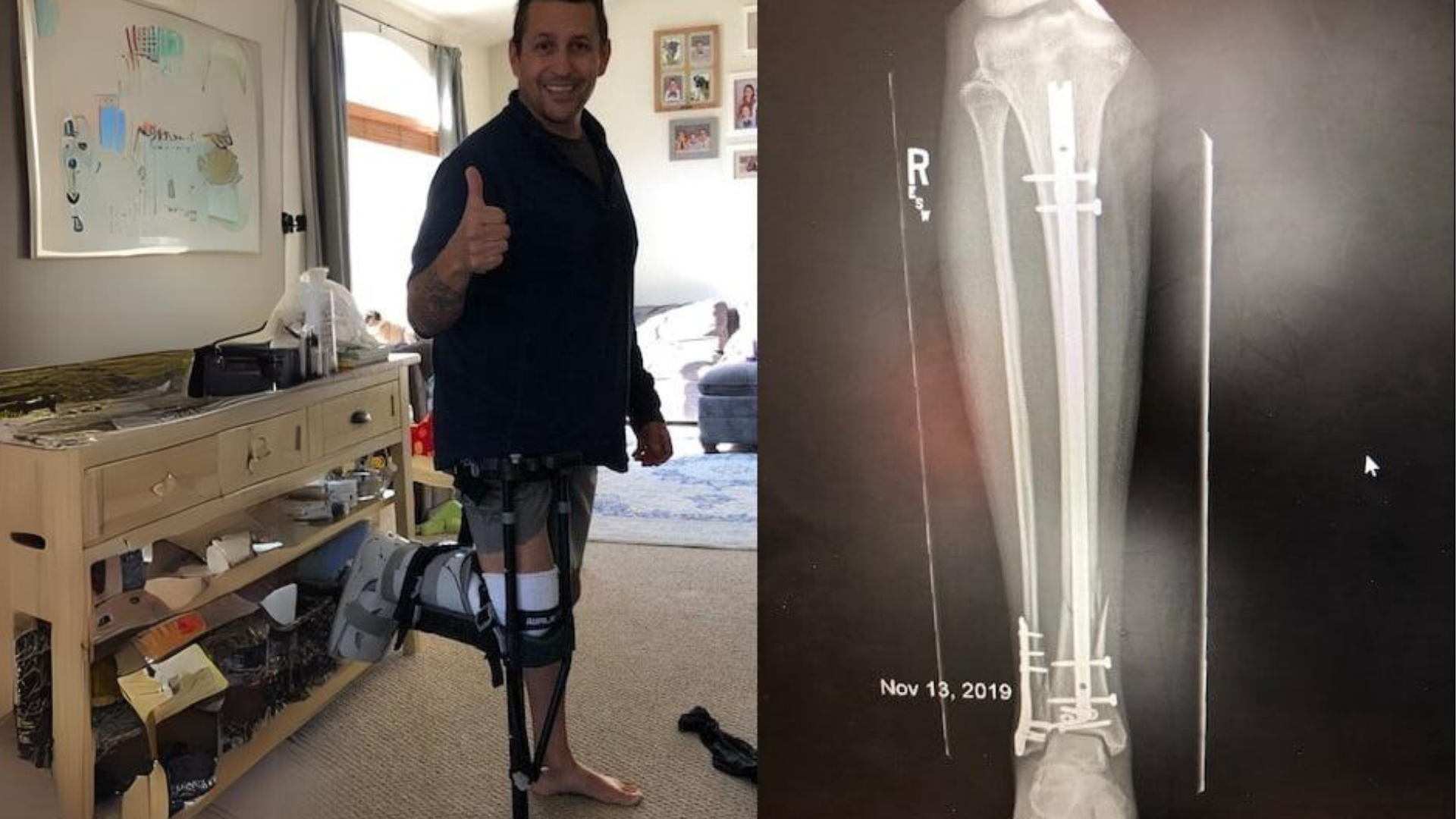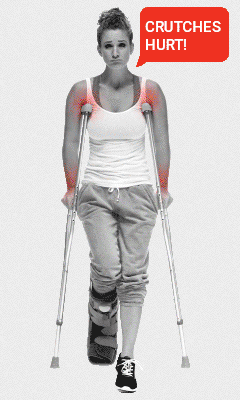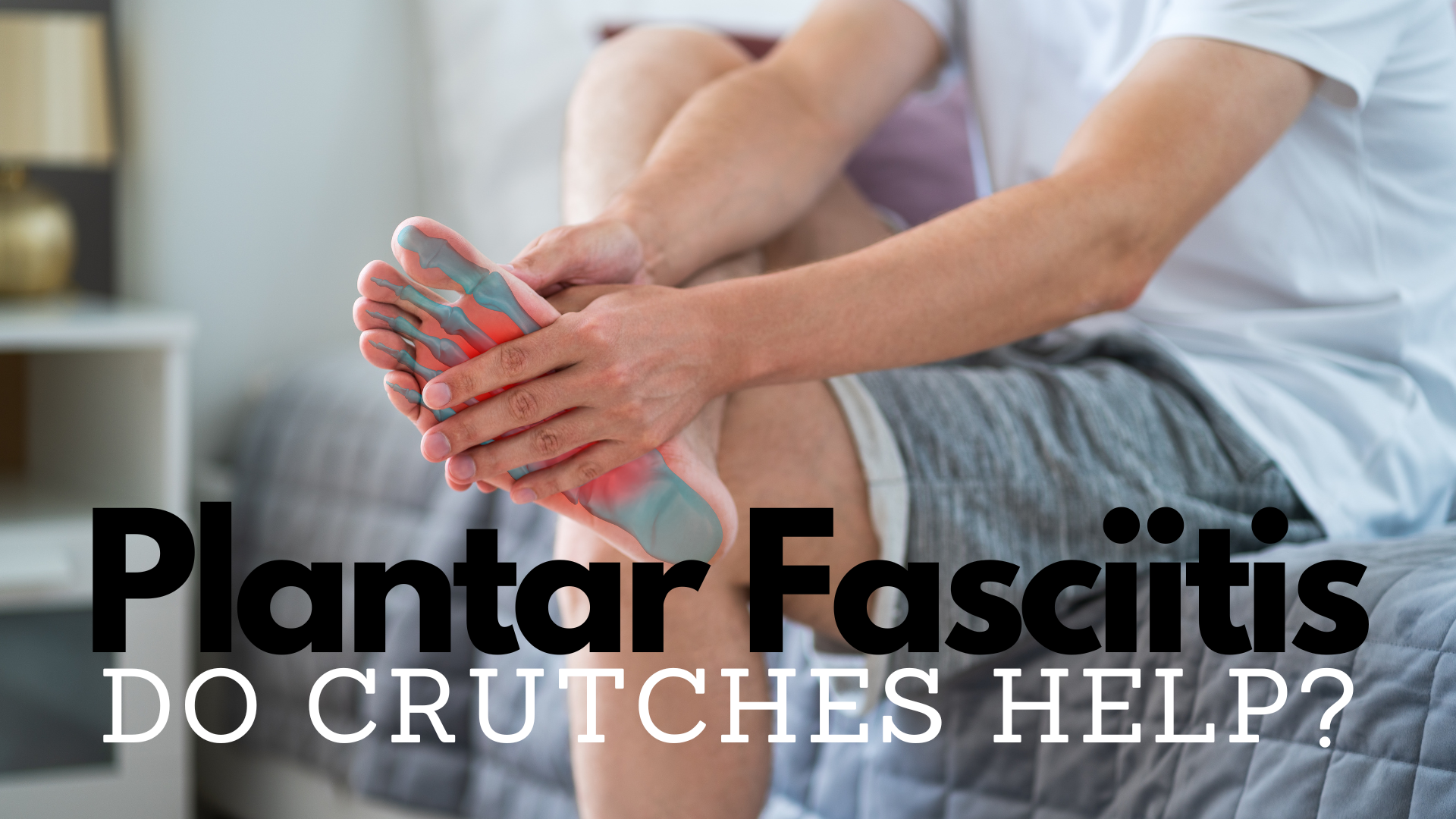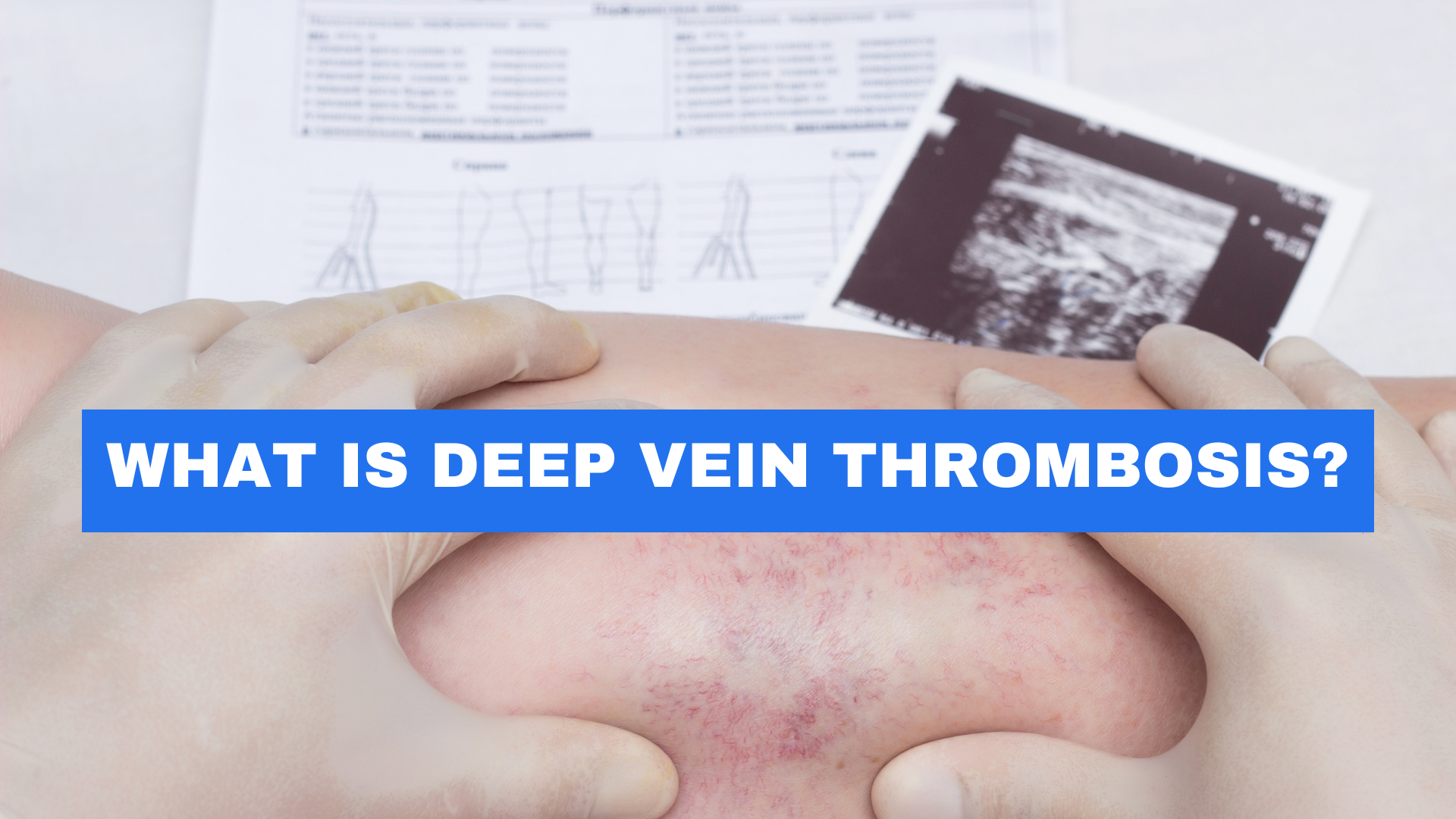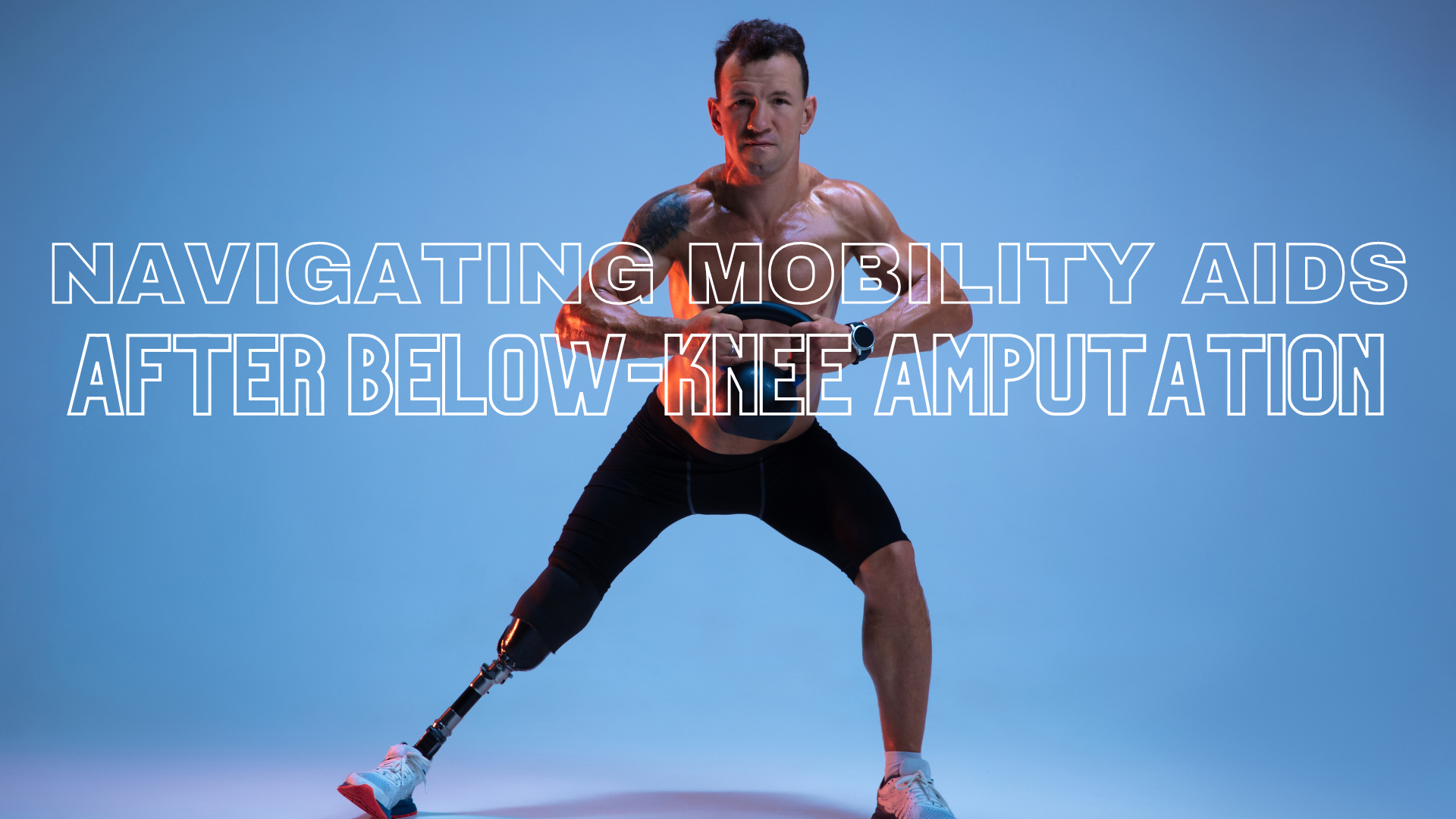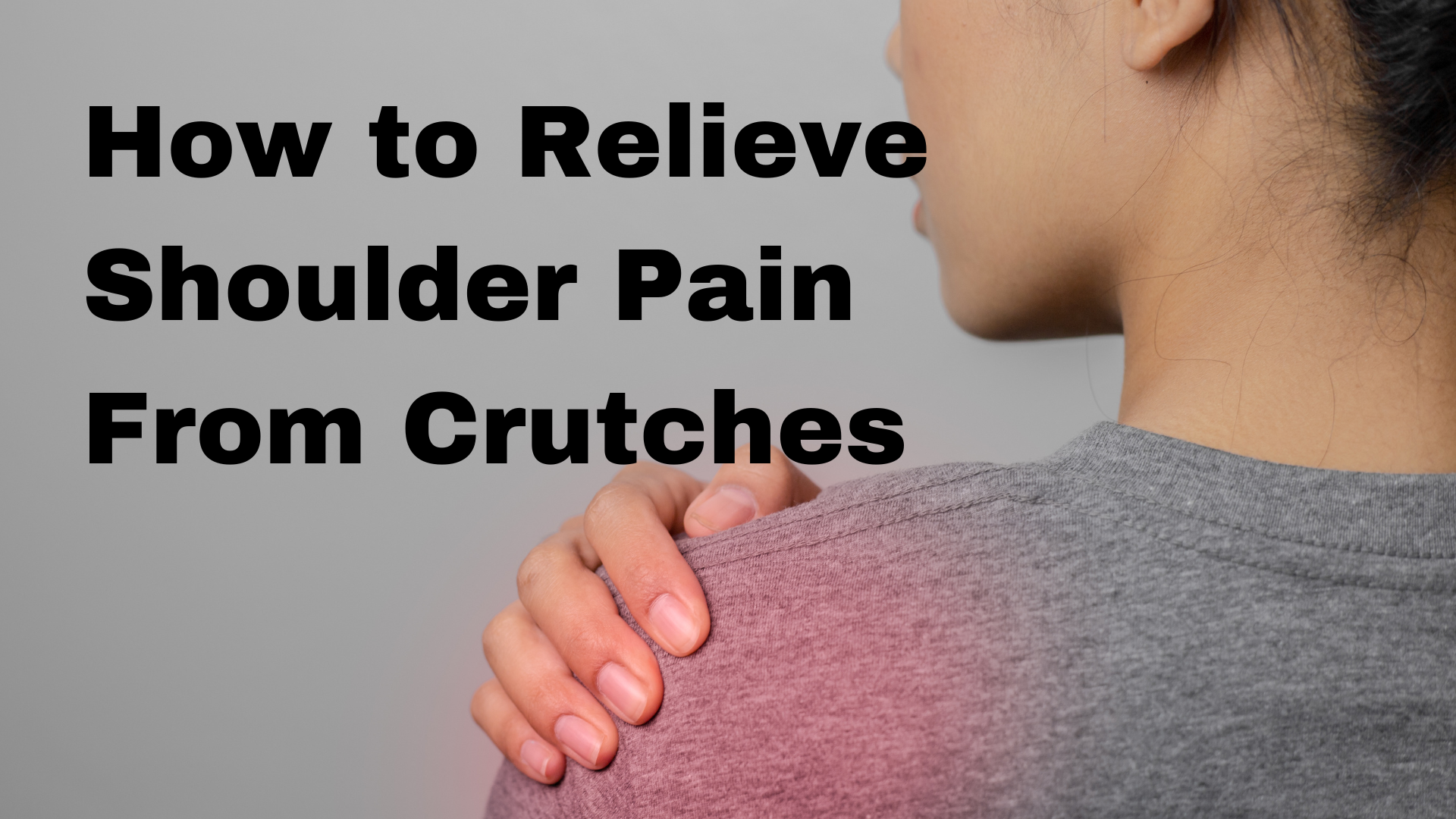Physical Therapist Eric J Nelson Reviews the Mobility Options Available to Patients With Lower Leg Injuries
Physical Therapist Eric J Nelson reviews the mobility options available to patients with lower leg injuries, including crutches, knee scooters, and the iWALK Hands-Free Crutch.
In October 2019, my daughter and I had been attending Brazilian jiu-jitsu (BJJ) classes for about seven months. It was extremely fun, challenging, and at times frustrating.
While practicing takedowns, my foot was planted on the floor while my partner rotated his body weight on mine. There was a tremendous crack and I sustained a comminuted spiral fracture of my tibia and fibula. After a three-hour surgery, I knew I was going to have a rough recovery as I would be non-weight bearing for three months.
I have a beautiful wife and four children, one of whom was seven months old at the time. I live in a home that is a split-level rental and has 14 steps. Thankfully the BJJ really improved my fitness level and I suffer from no significant balance deficits.
The purpose of this article is to provide my experience with the iWALK Crutch, why I chose it as my primary device and a basic review of the other options for assistive devices. There can be no reasonable discussion of assistive devices without recognizing that physical ability, living arrangements, and functional requirements drive choice. Also, there is no one perfect device for all situations. I used several different tools at different times of my recovery.
A baby in the home, a 1,600 square-foot multistory home, winter weather with snow, and being able to drive or not are all factors that influenced my decision. I received no compensation for this review and I hope that it will be a help to others who have to endure a period of non-weight bearing.
Wheelchair
Initially, a wheelchair within my home was not possible. Steps to enter, limited space and all the baby equipment did not work. I borrowed a wheelchair from a friend and it served me well outside for playing with the kids as it allowed me to manage fatigue and have free hands to play ball and work in the garage.
Wheelchairs are helpful for distance, if you have balance or endurance deficits, or if you need free hands to carry items (if someone else is pushing you). They are very difficult to lift into/out of vehicles. Cost is a huge drawback. The best deal, by purchasing directly through Amazon, can be had for about $100 with elevating leg rests a cushion and “lightweight” which is still close to 40 pounds. If you go through insurance, especially Medicare, be prepared to wait while the reams of bureaucratic paperwork are prepared and you will still pay more than Amazon. A loaner from a friend, church, or even VFW is still your best option.
Walker
I was very surprised at how unsteady I was right after my surgery while I was still in the hospital. I used the walker for the first few days after I got home until I felt less wobbly and was more used to the pain med effects. It is more stable for mild balance problems, but also very tiring and slow. It limits the ability to carry items and is no good at all on steps. This is a basic device that is a standard we use in the rehab hospital for almost everyone.
At my fitness level, I could have stuck with it, but once I felt steady, it was gone! Walkers are cheap and readily available at a thrift store for $7-10, $30-80 on Amazon now, or ridiculously priced but covered through insurance with a prescription.
Crutches
In my career as an inpatient rehab PT, I have had little success with crutches. Most of our patients have pre-existing balance problems or weakness that limits safety. Being at a higher fitness level, I was able to safely use crutches as my primary device for six weeks. They work on the steps fairly well so long as you have good balance, and/or use a handrail on one side.
They do suffer more drawbacks than advantages in my mind. They put pressure on blood vessels and nerves in the underarm area, they create significant weakness in the affected hip as you cannot use the part of your leg that is not injured; you cannot carry items; they fall over and are never near when you get up; they require good coordination; they are very tiring in the community; and they are long to put into your car when you’re driving.
The benefits are that they are super cheap and usually covered by insurance with a prescription. Truthfully, I bought mine for cash on my FSA card for $35 at a pharmacy and they are adjustable enough for me and my kids. Hopefully, we won’t need them again.
Knee Scooter
This is a really popular option for people and I have a decidedly love/hate relationship with them. I love that people can weight bear more symmetrically and use their affected side hip. My problem with them is that they are difficult to safely mount and dismount. Almost universally people will say they rented one before an elective ankle surgery and when asked if they practiced with it before surgery, they will admit to not practicing with a single leg.
It requires good balance and strength to pivot and rotate on one leg and good safety awareness to be sure the brakes are locked. Also, the turning radius is quite large and it requires a lift to turn it within the confines of my home which increases the risk of falls.
It is heavy to carry up steps for a helper and dragging it up by yourself really eliminates its use within a multi-story home. I know people that did/do it, but really cannot understand why when considering the iWALK’s benefits. They also are tough to use in the bathroom due to the turning radius. A feature shared with the iWALK crutch is that many people complain about the pressure/shear forces on the kneecap with prolonged use in the community.
Those that like it usually love it. The last and final drawback to the knee scooter is cost. They are not covered by insurance and can run $300-400 when bought from Amazon, and rentals are also pretty high.
iWALK Hands-Free Crutch
The iWALK Hands-Free Crutch has been around for some time. I have been a PT in multiple settings (inpatient acute, acute inpatient rehab, outpatient, home health, industrial rehab, orthopedics, trauma) over the last 17 years of my career and was unaware of it prior to seeing it in a continuing education class one week before my injury.
In discussions with my colleagues that know of the device, they either love it or are fearful of it due to perceived safety/balance issues, elevated fall risk, and liability concerns should a patient injure themselves after it was recommended to them. We, as a medical profession, have become very risk averse.
When I received my iWALK, it was packed neatly, assembly instructions were simple, and I sized it to myself following the directions online. I received it three weeks after my injury and I was so tired of crutches that I began using them immediately.
The knee padding was comfortable given that I had a fresh scar from surgical incisions. I did try many types of extra padding, but truthfully it was best with the factory padding and shorts. I also found that when using baby powder to ease putting on the compression stocking, I would rub it on my knee and this seemed to reduce painful shearing. The extra material from clothing or padding just rubbed and bunched, increasing painful shearing.
Straps were easy to use and secure but needed frequent adjusting. Comfort was improved after I was done with the protective boot, as it was increasing pressure points when walking. Immediately I was quite balanced and was able to climb ramps and manage steps. Steps require a step to ascent (up with the good) and a backward step to descent (down with the bad leg backward) to safely manage. I was able to carry my 20-pound baby daughter, stand to cook meals and do chores around the house. It immediately increased my ability to feel useful in spite of the need for frequent rest.
It does increase spine movement when walking and having adequate hip and knee flexibility reduces discomfort with longer community distances. My knee incision and painful skin shearing limited distance initially, but gradually I was able to walk through Costco, which made me happy to stop using the hated power cart. When I began driving, I would quickly unstrap the device and put it on the passenger side, then climb into the vehicle.
I walked in the grass, gravel, woods, frosty concrete, tile, and carpet. I climbed an incline ramp with a solid rail, and I attended and participated in a bowling fundraiser my colleagues had for our family. I was able to climb a ladder (discouraged due to safety liability of course), climb onto a 30-foot sailboat and walk across the moving deck safely (much to the shock and horror of my safety police friends). When the snow came, I was able to use a snow blower to clean my driveway.
People were always interested in questions and frequently thought I was a new amputee due to not seeing the leg behind me. I had only a few unsafe moments which had no significant outcomes, but that was because I am fit with good balance. In the snow, the square area on the bottom of the rubberized foot will get packed with snow. When entering from outside into the warm building, that snow will melt and create a slick of water on the tile. I had several losses of balance, but never a fall. This risk really exists with any assistive device, I do not think the iWALK crutch is worse than anything else, just important to be careful.
The durability of the device was good given how hard I beat it. I would note that the bottom of the rubberized foot where it attaches to the pilon is loose on mine. Lastly, I want to address cost, the Amazon price or direct purchase from the manufacturer/dealer is $150. This is a bargain in my view given how useful it is, but it is not covered by all insurance. I was happy to pay it given how much FREEDOM and sense of purpose it gave me. It’s hard to be a burden on loved ones, and truthfully I was able to genuinely be a help to myself and others.
I hope that this review will be of help and will provide information to those seeking better mobility while waiting for healing. Being able to safely adhere to non-weight bearing after fractures or new amputation is tremendously important but also difficult. In my opinion and experience the iWALK crutch can advance healing and promote safe independence, the holy grail of rehabilitation.

